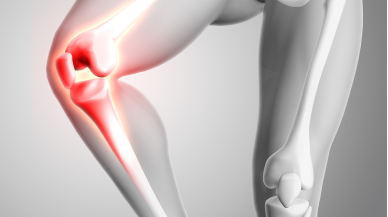If you’ve ever dealt with aching, stiff, or unstable knees, you know how frustrating it can be. Whether it’s from years of running, a past injury, arthritis, or just wear and tear, bad knees can slow you down fast. But here’s the good news there are plenty of options out there to help you feel better, move easier, and get back to doing what you love. The key is finding the best knee support for your specific needs.
Let’s break down what causes knee issues, the types of support available, and how to choose the right one for your lifestyle.
Why Do Knees Go Bad?
Before you can fix the problem, it helps to understand what’s behind it. Common causes of knee pain include:
- Arthritis - especially osteoarthritis, which wears down cartilage over time
- Injuries - like torn ligaments (ACL, MCL), meniscus tears, or fractures
- Overuse - repetitive motion from running, sports, or standing jobs
- Age and weight - both add extra pressure on your joints
These issues can lead to pain, swelling, weakness, instability, or all of the above. That’s where the right knee support comes into play.
Types of Knee Supports
Not all knee supports are created equal. Different designs serve different purposes from mild compression to full joint stabilization. Here’s a look at the most common types:
1. Compression Sleeves
These are tight-fitting, elastic sleeves that slide over your knee. They’re lightweight and breathable, offering gentle pressure to reduce swelling and improve circulation. They’re great for:
- Mild knee pain
- Preventing injuries
- Post-workout recovery
However, compression sleeves don’t provide much structural support. They’re best for low-impact activities or for people with minimal instability.
2. Knee Braces
Knee braces offer more robust support and usually include some type of frame, hinges, or adjustable straps. There are different styles depending on your needs:
- Hinged braces - provide lateral support for ligament injuries
- Patella stabilizers - help with kneecap alignment
- Unloader braces - shift pressure away from damaged areas, especially helpful for arthritis
Braces are ideal if you need more control, joint protection, or are recovering from injury or surgery.
3. Dual-Action Supports (Like Nübrace)
A newer generation of supports combines the comfort of a sleeve with the functionality of a brace. The Nübrace knee support, for example, uses a dual-spring mechanism and adjustable resistance to actively lift the leg and reduce strain during movement. This kind of support is perfect for:
- Athletes with chronic knee issues
- Post-op recovery patients
- People who want both support and mobility
It’s dynamic rather than passive helping you move, not just holding you in place.
What Makes a Knee Support “The Best”?
The truth is, the best knee support isn’t one size fits all. It depends on your activity level, condition, and comfort preferences. Here are a few things to consider when shopping around:
Support Level
Do you need basic compression, or full-on joint stabilization? Don’t overdo it too much support can actually weaken the surrounding muscles if you rely on it too much.
Fit and Comfort
If it’s too tight, it’ll cut off circulation. Too loose, and it won’t do its job. Look for something that stays in place without sliding or digging in. Bonus points if it’s breathable and moisture-wicking.
Ease of Use
Some braces are complicated with straps and hinges, which can be great for injuries but annoying for everyday use. A pull on sleeve or adjustable design like Nübrace can be more convenient.
Durability
If you’re wearing it every day, you want something that lasts. Look for high-quality materials and strong stitching.
Lifestyle Compatibility
Are you wearing it at work? At the gym? On hikes? Choose something that matches your pace and habits.
When Should You Wear Knee Support?
Knowing when to wear a knee support is just as important as choosing the right one. Here are some situations where it can help:
- During exercise or sports, especially if you’ve had past injuries
- After knee surgery, to aid in healing and reduce re-injury risk
- At work, if you stand or walk for long periods
- During flare-ups of pain or swelling
- Anytime your knees feel unstable or “wobbly”
That said, knee supports aren’t meant to be worn 24/7. It’s important to also strengthen the muscles around your knees through physical therapy or safe workouts.
Pro Tips: Taking Care of Your Knees
Even the best knee support can’t fix everything. Here are a few lifestyle tweaks that can help protect your knees long-term:
- Strengthen your quads, hamstrings, and glutes
- Stretch regularly, especially your IT band and calves
- Watch your weight - extra pounds = more knee strain
- Use proper footwear for shock absorption
- Don’t push through sharp pain - listen to your body
Final Thoughts
So, what’s the best support for bad knees?
It depends on what you need. For light pain and swelling, a compression sleeve might do the trick. For more serious support after injury or surgery a brace is better. And if you’re looking for something that moves with you and actively assists your knee function, something like the Nübrace knee support may be the smartest option out there.
Ultimately, your knees work hard for you. Give them the right support, and they’ll help you stay on your feet for the long haul.









